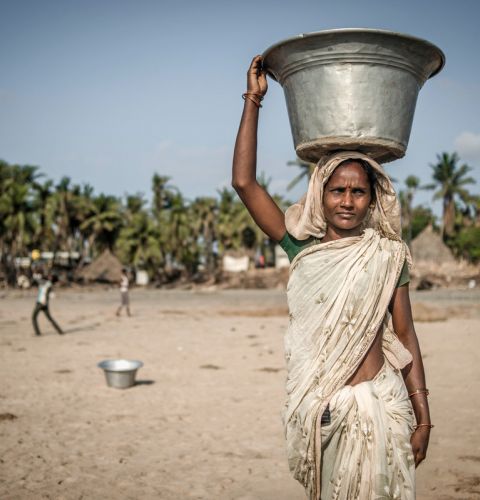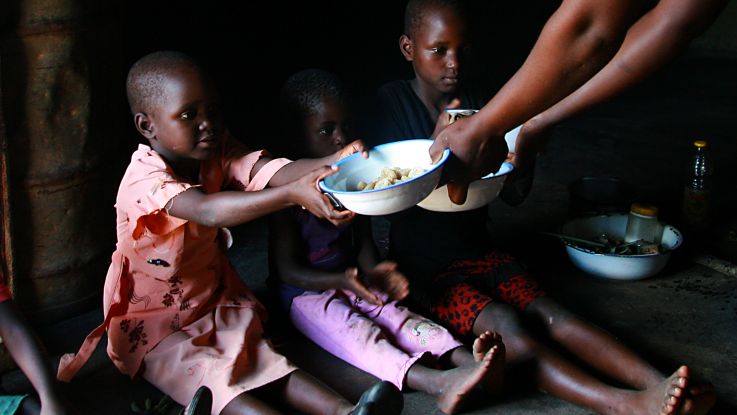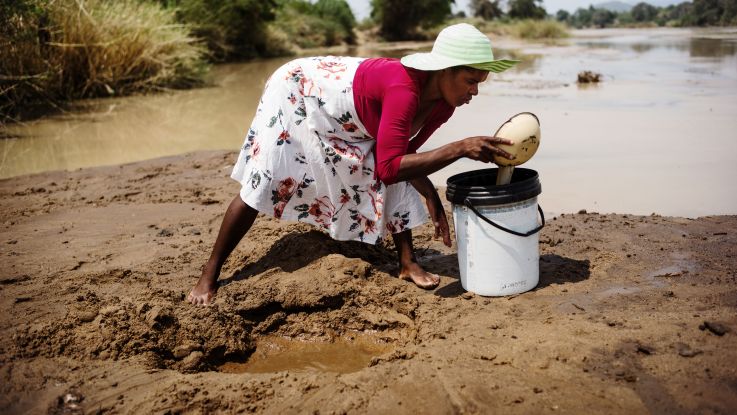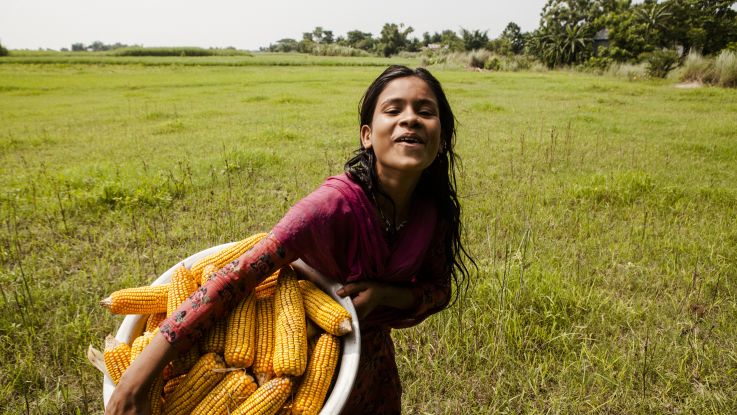Food security and sustainable livelihoods
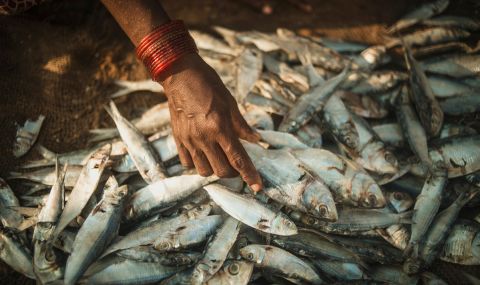
In Andra Pradesh, India, a fishing community has been supported with tools and training to help women to become economically independent. Poulomi Basu/ActionAid .
Food security and gender
It’s estimated around 60% of the world’s chronically hungry people are women and girls3, for many reasons:
- Women are more likely to rely on the land for their food and income, made increasingly difficult by the changing climate.
- Women are, however, often prevented from owning land.
- Women tend to face higher barriers to resources that would help alleviate food insecurity, including agricultural resources, services and credit.
- Women are less likely to be in decision-making and/or leadership roles, which means women’s rights and contributions are often overlooked.
- Gender inequality in the distribution of unpaid care work deprives women from opportunities for paid work, education, and political participation, all of which have a bearing on their food security and nutrition.
- In times of food scarcity, men and boys often get preferential food access, meaning women tend to eat least, and last.4
Women's roles in the fight against food insecurity
While women are disproportionately affected by food insecurity, they are also on the frontline of fighting the issue:
- Eight out of ten agricultural workers in Africa are women.
- Six out of ten in Asia are women.
- Rural women represent approximately two thirds of the world’s 400 million poor livestock keepers.
- Women usually take the role of care-givers in the family — producing, storing, cleaning, cooking food for consumption – and ensuring that food, when available, reaches children first.5
It has been estimated that if women had the same access to productive resources as men, they could increase yields on their farms by 20–30%, in turn lifting 100-150 million people out of hunger.6
What ActionAid does to support sustainable livelihoods
We work across some of the world’s poorest countries to help women develop climate-resilient, sustainable livelihoods, with which they can support and feed their families.
Our initiatives include training women farmers in resilient farming and fishing techniques, including soil conservation, crop diversity, seed banks and water management.
We also support women to access land rights, particularly through ActionAid women’s groups, where women learn about their legal rights and how to assert them.
And we run cooperative farming schemes, supporting women to access livestock, seeds and tools. In these schemes, for everything women sell, they put a percentage back into a communal fund, so all members can access food when they need it.
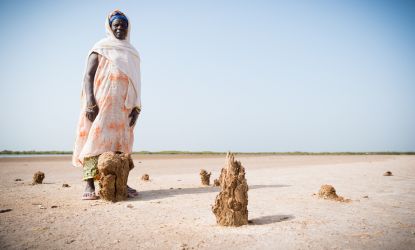
Our Agro-Ecology and Resilience Project has introduced strategies to help women like Bineta adapt to the changing climate in Senegal
Clément Tardif/ActionAid
Supporting communities with sustainable livelihoods
Bineta, 72, stands by the remains of a rice store on Baout Island, Senegal.
The island has been experiencing extreme conditions due to climate change, including soil salinisation, erratic rainfall and rising sea levels.
As a result rice cultivation, fishing and shellfish collection have been in decline.
But ActionAid is now supporting the community with climate-resilient farming methods so that women like Bineta can earn a sustainable living.
The Agro-Ecology and Resilience Project is distributing salt- and drought-resistant seeds, and training local women in new farming techniques, like table gardening.
Using water harvesting techniques and storing rain collected from roofs and stored in tanks, table gardening allows food to be grown on tables using a groundnut husk mulch.
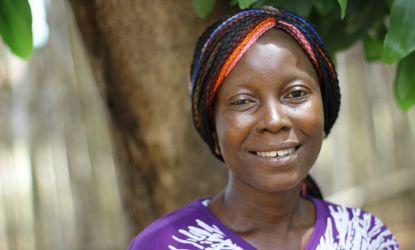
Training communities to support food security
Josephine is a volunteer Youth Coordinator in Bo District, Sierra Leone.
In the wake of the Ebola outbreak in her district, which affected thousands of people, ActionAid ran leadership, advocacy and business in her communities, including a skills programme teaching women to make soap so they can bring in a sustainable income.
Josephine now has a small business, is able to support her family, and has become a strong advocate in her community.
“In Sierra Leone it is difficult for women to own and assess land, but with my advocacy skills I have been informing my colleagues,” she said. "I have been training other women on how to advocate for their rights and how to talk on issues so that their future will be bright, because land is all that we have and land is our future.”
Josephine, from Sierra Leone, now volunteers with ActionAid
ActionAid
How climate change is causing food insecurity
As floods, droughts, typhoons and other climate-related emergencies become more frequent, and more severe, people living in the most vulnerable places are finding it even harder to farm and earn a living.
Around the world, 500 million people now live in areas that are experiencing desertification due to rising global temperatures.7
The number of extreme climate-related disasters, including extreme heat, droughts, floods and storms, has doubled since the early 1990s.
These disasters harm the production of vital crops like wheat, rice and maize, causing food prices to rise and disrupting access to food.8
The difference between food insecurity and famine
Famine is very different to food insecurity, and occurs when a food insecurity crisis is not properly addressed, or not addressed quickly enough.
A famine is declared only when certain measures of mortality, malnutrition and hunger are met:
- At least 20 per cent of households in an area face extreme food shortages with a limited ability to cope
- Acute malnutrition rates exceed 30 per cent
- And the death rate exceeds two persons per day per 10,000 persons.
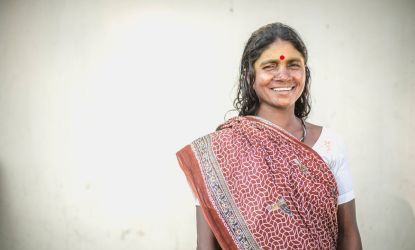
Training fisherwomen in India to build food security
In a remote fishing village in Andhra Pradesh, India, Durga struggled for years to raise her family, until she received support and training from ActionAid.
She received tools and resources (like utensils, ice buckets and weighing machines) to help kickstart her fishing business, and attended training sessions in the community.
“Thanks to the project we can address any problems that come our way,” she said.
We go out to bargain collectively and now we sell fish individually. We sell fish in every street and village. Now we are able to understand the economics of marketing: what is profit, what is loss and how much we can get for this type of fish for that type.”
Durga is now self-sufficient, is supporting her family and is building a new house.
Durga had lost the land she owned, and was working as a day labourer, before training from ActionAid helped her become economically independent
Poulomi Basu/ActionAid
Footnotes
- 1http://www.fao.org/state-of-food-security-nutrition/en/
- 2http://www.fao.org/state-of-food-security-nutrition/en/
- 3https://www.unwomen.org/en/news/in-focus/commission-on-the-status-of-women-2012/facts-and-figures
- 4https://www.unwomen.org/en/news/stories/2017/10/op-ed-ded-puri-women-addressing-hunger-malnutrition-and-poverty
- 5https://www.unwomen.org/en/news/stories/2017/10/op-ed-ded-puri-women-addressing-hunger-malnutrition-and-poverty
- 6https://news.un.org/en/story/2011/03/368252-women-could-feed-millions-more-people-if-given-access-means-production-un
- 7https://news.un.org/en/story/2019/08/1043921
- 8https://unfccc.int/news/un-warns-climate-change-is-driving-global-hunger
Page updated 19 December 2024
